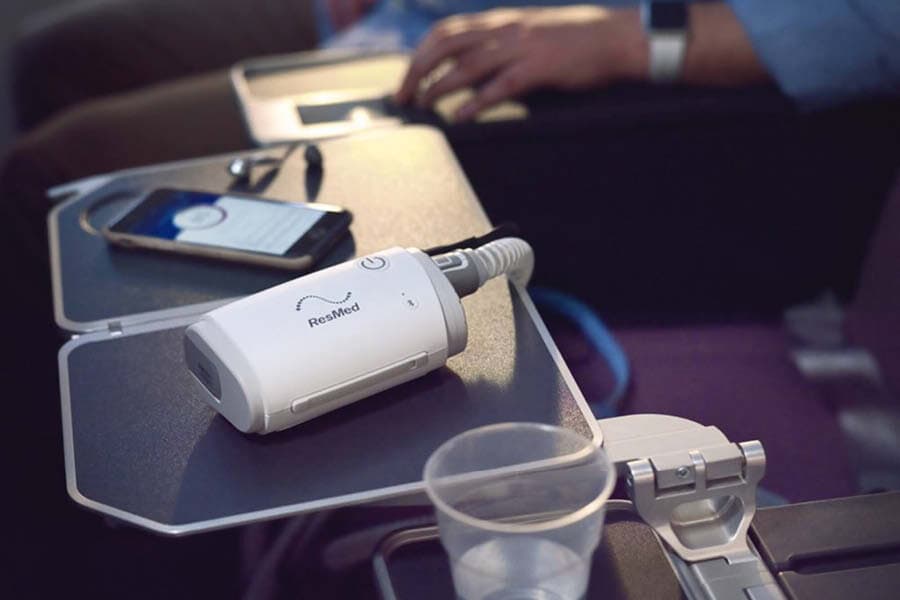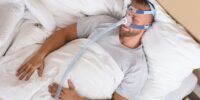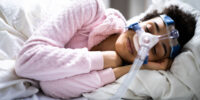How To Travel Safely With Sleep Apnea Equipment?

Sleep apnea is a prevalent sleep disorder that affects millions of people worldwide. Individuals with sleep apnea rely on specialized equipment such as continuous positive airway pressure (CPAP) machines to ensure uninterrupted breathing during sleep.
However, traveling with sleep apnea equipment can present unique challenges and considerations. This article aims to provide a comprehensive guide on how to travel safely with sleep apnea equipment.
By planning ahead, notifying airlines and accommodations, carrying necessary documentation and prescriptions, practicing good hygiene and maintenance, using travel-friendly equipment, ensuring power accessibility, being prepared for security checks, and staying connected with healthcare providers, individuals with sleep apnea can navigate their travel experiences with ease and ensure their equipment works effectively throughout their journey.
Following these guidelines will enable individuals with sleep apnea to prioritize their health and maintain their well-being even while away from home.
Key Takeaways
- Notify airlines and accommodations in advance
- Carry necessary documentation and prescriptions
- Practice good hygiene and maintenance
- Ensure power accessibility and research charging options at the destination
Plan Ahead and Pack Wisely
When traveling with sleep apnea equipment, it is crucial to plan ahead and pack wisely to ensure a safe and hassle-free journey.
Firstly, it is important to check the airline’s policies regarding medical equipment and inform them in advance about your condition. This will help avoid any last-minute complications and ensure that the necessary arrangements are made for your equipment.
Secondly, make a checklist of all the essential items you need to bring, such as your CPAP machine, mask, tubing, and power adapters. Ensure that your equipment is in good working condition and pack it securely in a sturdy, well-padded case to protect it from damage during transit.
Additionally, it is wise to pack extra supplies, such as filters and masks, in case of emergencies or unexpected delays.
By planning ahead and packing wisely, you can travel safely and comfortably with your sleep apnea equipment.
Notify Airlines and Accommodations
To ensure a smooth travel experience, it is advisable to inform airlines and accommodations about the specific requirements related to the use of medical equipment for individuals with sleep apnea. This will help them make necessary arrangements and accommodate the needs of the traveler.
When notifying airlines and accommodations, it is important to provide them with the following information:
- Inform them about the need to carry sleep apnea equipment as part of the carry-on baggage.
- Specify the type of equipment being carried, such as a CPAP machine, and its dimensions.
- Request for a power source in case the equipment requires electricity.
- Inquire about any specific procedures or policies they have in place for travelers with medical equipment.
By notifying airlines and accommodations in advance, individuals with sleep apnea can ensure that their travel experience is comfortable and that their medical needs are appropriately addressed.
Carry Documentation and Prescriptions
Carrying proper documentation and prescriptions is essential for individuals with specific medical needs while traveling. When traveling with sleep apnea equipment, it is important to have all the necessary documents readily available. This includes a letter from the prescribing physician detailing the medical condition, the prescribed treatment, and the need to carry the equipment.
It is also recommended to carry a copy of the sleep study results and any relevant medical records. In addition to documentation, it is crucial to have the prescriptions for the sleep apnea equipment. This ensures that the equipment is not mistaken for illegal substances and allows for smooth passage through security checkpoints.
By carrying the required documentation and prescriptions, individuals with sleep apnea can ensure a safer and hassle-free travel experience.
Practice Good Hygiene and Maintenance
Maintaining proper hygiene and regularly cleaning the necessary medical devices is imperative to ensure the functionality and longevity of the equipment. Sleep apnea equipment, such as CPAP machines and masks, can accumulate dirt, bacteria, and other contaminants over time. Therefore, it is essential to follow good hygiene practices to prevent respiratory infections and other health complications.
Firstly, it is crucial to clean the mask, tubing, and humidifier chamber regularly with mild soap and water. Additionally, it is recommended to replace the disposable filters and mask cushions as per the manufacturer’s instructions.
Furthermore, it is essential to ensure that the equipment is completely dry before storing it in a clean and dry place. By practicing good hygiene and maintenance, individuals can travel safely with their sleep apnea equipment and ensure its optimal performance.
Use Travel-Friendly Equipment
Travelers can benefit from using compact and portable devices designed specifically for individuals with respiratory conditions. These travel-friendly equipment options provide convenience and ease of use while ensuring safety and comfort for sleep apnea patients. Some examples of such devices include portable CPAP machines that are lightweight and easy to pack, as well as travel-sized humidifiers that help prevent dryness and irritation. Additionally, there are travel-friendly masks available that are designed to be less bulky and more comfortable for users on the go. By using these travel-friendly equipment options, sleep apnea patients can continue their therapy while traveling without compromising on their comfort and health. Ensuring the availability of such equipment can significantly contribute to a positive travel experience for individuals with sleep apnea.
| Pros | Cons |
|---|---|
| 1. Portable and lightweight | 1. Limited features compared to regular equipment |
| 2. Easy to pack and carry | 2. May require additional accessories |
| 3. Compact design | 3. Higher cost compared to standard equipment |
| 4. Provides comfort and convenience | 4. May not be covered by insurance |
Ensure Power Accessibility
This discussion will focus on ensuring power accessibility while traveling with sleep apnea equipment.
Firstly, it is important to check power adapters and voltage compatibility to ensure that your equipment can be used safely in different countries.
Secondly, carrying spare batteries or a power bank can provide a backup power source in case of emergencies or when power outlets are not readily available.
Lastly, researching power outlets and charging options at your destination can help you plan ahead and make necessary arrangements to ensure uninterrupted use of your sleep apnea equipment.
Check Power Adapters and Voltage Compatibility
To ensure the safe and uninterrupted use of sleep apnea equipment while traveling, it is crucial to verify the compatibility of power adapters and voltage requirements. Different countries have varying power outlets and voltage standards, making it necessary to have the appropriate adapters and ensure compatibility.
Here are three important considerations regarding power adapters and voltage compatibility:
- Research the power outlet types in the destination country and purchase the corresponding adapters beforehand.
- Check the voltage requirements of the sleep apnea equipment and ensure it matches the voltage provided at the destination. Voltage converters may be necessary if the equipment operates on a different voltage.
- Consult the equipment manufacturer or a travel specialist to obtain specific information regarding power adapters and voltage compatibility, ensuring the safe and efficient use of sleep apnea equipment during travel.
Carry Spare Batteries or a Power Bank
When traveling with sleep apnea equipment, it is essential to be prepared for any power-related issues that may arise. In the previous subtopic, we discussed the importance of checking power adapters and voltage compatibility. Now, let us delve into another crucial aspect of safe travel with sleep apnea equipment: carrying spare batteries or a power bank.
These backup power sources ensure that you can continue using your equipment even if you encounter unexpected power outages or if there are no electrical outlets available. It is advisable to bring extra batteries or a power bank with sufficient capacity to last the entire duration of your trip. Additionally, familiarize yourself with the Transportation Security Administration (TSA) guidelines regarding the transportation of batteries to ensure compliance and a hassle-free travel experience.
By having spare batteries or a power bank, you can rest assured that your sleep apnea equipment will continue to function effectively throughout your journey.
Research Power Outlets and Charging Options at Your Destination
Before embarking on your journey, it is advisable to conduct thorough research on the availability and accessibility of power outlets and charging options at your destination. This is particularly important for individuals traveling with sleep apnea equipment, as these devices usually require regular charging.
Start by identifying the type of power outlets used in the country you are visiting and ensure that you have the appropriate adapters or converters. Additionally, research the voltage and frequency of the local power supply to determine compatibility with your equipment.
It is also recommended to inquire about the availability of power outlets in hotel rooms or other accommodations you plan to stay in. If necessary, consider bringing a portable power bank or battery backup to ensure uninterrupted power supply during your travels.
By taking these precautions, you can ensure that your sleep apnea equipment remains functional throughout your trip.
Be Prepared for Security Checks
Preparation for security checks necessitates ensuring that one is adequately equipped with all necessary documentation and knowledge of the rules and regulations surrounding sleep apnea equipment. It is important to be aware of the Transportation Security Administration (TSA) guidelines, as they have specific requirements for carrying medical devices such as CPAP machines. Generally, CPAP machines are allowed in carry-on bags and do not count towards the carry-on limit. However, it is recommended to inform the security officers about the presence of the device during the screening process. To facilitate the security check, it is advisable to pack the equipment in an easily accessible and separate bag. Additionally, having a copy of the prescription or a letter from the healthcare provider stating the necessity of the equipment can be beneficial. Taking these necessary precautions can help ensure a smooth and hassle-free security check process.
| Tips for Security Checks |
|---|
| Inform security officers about the presence of CPAP machine during screening |
| Pack the equipment in an easily accessible and separate bag |
| Have a copy of the prescription or a letter from the healthcare provider |
| Familiarize yourself with TSA guidelines |
Stay Connected with Your Healthcare Provider
Staying connected with one’s healthcare provider is crucial for maintaining proper care and management of one’s medical condition. When traveling with sleep apnea equipment, it is important to stay in touch with your healthcare provider to ensure you have the necessary support and resources. Here are three ways to stay connected:
- Consultation: Before embarking on your trip, schedule a consultation with your healthcare provider. Discuss your travel plans and any concerns you may have. They can provide advice on managing your sleep apnea while traveling and may recommend adjustments to your treatment plan if necessary.
- Remote Monitoring: Many sleep apnea devices have remote monitoring capabilities. This allows your healthcare provider to track your therapy progress and make any necessary adjustments from a distance. Stay connected with your provider through remote monitoring to ensure optimal therapy during your travels.
- Emergency Contacts: Keep a list of emergency contacts provided by your healthcare provider. In case of any unexpected issues or emergencies while traveling, you can reach out to these contacts for guidance and assistance.
By staying connected with your healthcare provider, you can confidently travel with your sleep apnea equipment, knowing that you have the necessary support and guidance throughout your journey.
Frequently Asked Questions
How can I ensure that my sleep apnea equipment is safe and secure during my travels?
Ensuring the safety and security of sleep apnea equipment during travel can be achieved by following certain measures. These include proper packing and organization, carrying necessary documentation, using protective cases, and being mindful of transportation regulations and guidelines.
Are there any specific regulations or guidelines I need to follow when traveling with sleep apnea equipment?
Specific regulations and guidelines do exist for traveling with sleep apnea equipment. It is important to check with the Transportation Security Administration (TSA) for any restrictions on carrying and using such equipment during travel.
What should I do if my sleep apnea equipment malfunctions or gets damaged during my trip?
In the event of sleep apnea equipment malfunction or damage during a trip, it is advisable to contact the manufacturer or supplier for assistance. They can provide guidance on troubleshooting, repair options, or replacements to ensure continuous use and safety of the equipment.
Can I use my sleep apnea equipment on an airplane? Are there any restrictions or additional requirements?
The use of sleep apnea equipment on airplanes is generally allowed, but there may be certain restrictions or additional requirements imposed by the airline. Passengers should check with the airline beforehand to ensure compliance with their policies.
How can I maintain proper hygiene and cleanliness of my sleep apnea equipment while traveling?
To maintain proper hygiene and cleanliness of sleep apnea equipment while traveling, it is important to regularly clean and disinfect the equipment according to the manufacturer’s instructions. This helps prevent bacteria buildup and ensures effective use.









